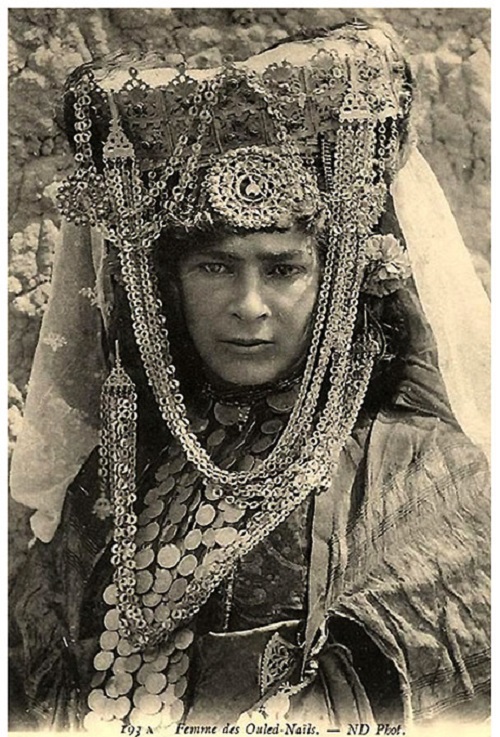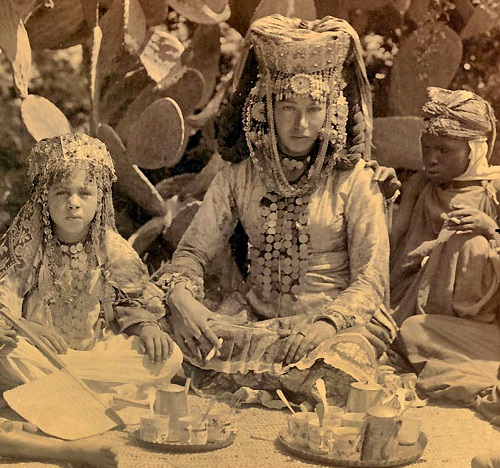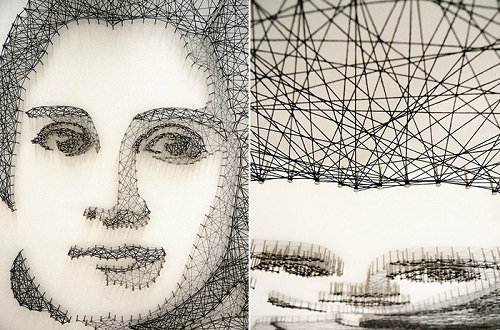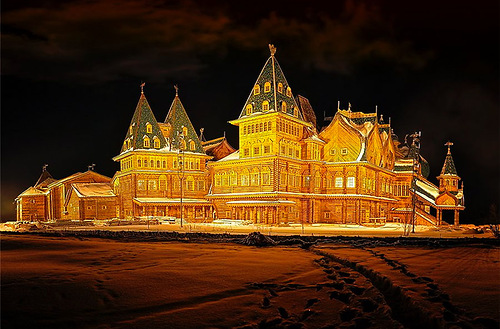Ouled Nail exotic dancers
The Ouled Nail – Berber tribes living in the vicinity of the towns of El Djelfa, Bou Saada Chellala and the Ouled Nail Mountains, a part of the Atlas Mountains of Algeria. The origin of these tribes lost in the depths of history. And though they were converted to Islam in the 7-8 centuries AD, they were able to preserve their identity and uniqueness until the 20th century. Traditionally, women held the central role in the tribe. They did not wear traditional Muslim veil, moved freely across the expanses of their territory without a male escort, even in adolescence. Worked as a dancer. Accumulated sufficient condition to marry. They had independence even more than many “liberated women” today.
Typical Ouled Nail exotic dancers wore brightly colored satin, embroidered with gold clothing, thin pale blue bedspreads, heavy silver and gold studded bracelets, which could be used as a weapon of defense. Wide, gold belt were decorated with pendants. On the neck – necklace of coins and numerous pendants. Apparel, jewelry, lifestyle of these people for a long time have become the embodiment of the East.
The Bou Saada performances often begin with a procession led by the musicians. The performance is announced by both Ghaita and Ululieren women. On stage, dancers and musicians sit together on a platform, while the soloists and dance groups stand out individually. Even the men of the Ouled Nail dance, they perform a dance with guns on and hide their lower half of the face with their headgear.
The various tribes meet on holidays and festivals in Chellala and put together their striped red and black tents. During the “carpet festival” they perform their dances on carpets attracting dealers and buyers. Each tent houses a group of musicians, dancers and singers. The dancers are mostly women who perform belly dance and thereby sometimes try to attract wealthy patrons.
Traditionally, the Ouled Nails are famous for their dancers. A woman who danced professionally, unlike in the Middle East, had no problems with her reputation. The dancers had no problems to find a man and get married. Dancing was in the contrary, a respected profession, young girls without disabilities could exercise it. Most of them left their rural surroundings and settled in larger cities, to dance. They were accompanied by grandmas, mothers or aunts who also functioned as “chaperones”. The women danced mostly in pairs. Typical of their style of dance are fluttering hand and finger movements, small grinding steps to the side and forward and gliding with the head.
The jewelry and the self-conscious appearance of the Ouled Nail-girls as dancers fascinated western Algeria visitors. 1914 Frank Edward Johnson described in National Geographic Magazine: “The (woman) Ouled Nail, with her gold-embroidered robe of glowing purple, her soft silk scarf from the most delicate blue, her broad golden belt with its innumerable chains and pendants, the necklace of coins, the bracelets of silver and gold and the long curly hair is the personification of the gorgeous East” (Frank Edward Johnson: The National Geographic Magazine, January 1914).
Unfortunately, everything changed in 1830, when France colonized Algeria. In fact, the French classified Ouled Nails as prostitutes, not taking into account the age-old traditions and culture of this nation. Women were forced to accompany the military to provide certain services to the soldiers, women could be killed for their decorations. After gaining independence, there were few in Algeria who worried about the preservation of this unique culture. Now little has remained from the heritage of the nation.
During the French occupation, the dancers of the Ouled Nails tribe had many regular customers among the French military. After the colonial period their performances were allowed only at family and local celebrations.
Today, only a few girls choose to work as a dancer. Their clothing has changed, although the traditional costumes are still used. Brocade, silk, golden diadems are applied less frequently. Today, the dancers usually wear several coats of translucent clothing, sometimes surrounded by a palla, and their turbans and head scarves are made of synthetic material. Some dancers in addition wear a transparent veil, others do entirely without a head covering. Dancers who sing at the same time, can charge higher fees and practice their profession for a long time.
Ouled Nail exotic dancers
image credit liveinternet.ru/users/veralex/




































